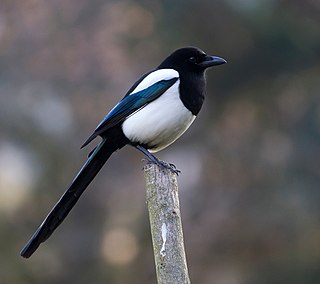Related Research Articles

Hamsters are rodents belonging to the subfamily Cricetinae, which contains 19 species classified in seven genera. They have become established as popular small pets. The best-known species of hamster is the golden or Syrian hamster, which is the type most commonly kept as a pet. Other hamster species commonly kept as pets are the three species of dwarf hamster, Campbell's dwarf hamster, the winter white dwarf hamster and the Roborovski hamster.

In taxonomy, binomial nomenclature, also called binary nomenclature, is a formal system of naming species of living things by giving each a name composed of two parts, both of which use Latin grammatical forms, although they can be based on words from other languages. Such a name is called a binomial name, a binomen, binominal name, or a scientific name; more informally it is also historically called a Latin name. In the ICZN, the system is also called binominal nomenclature, "binomi'N'al" with an "N" before the "al", which is not a typographic error, meaning "two-name naming system".

Otters are carnivorous mammals in the subfamily Lutrinae. The 13 extant otter species are all semiaquatic, aquatic, or marine, with diets based on fish and invertebrates. Lutrinae is a branch of the Mustelidae family, which also includes weasels, badgers, mink, and wolverines, among other animals.

Pheasants are birds of several genera within the family Phasianidae in the order Galliformes. Although they can be found all over the world in introduced populations, the pheasant genera native range is restricted to Eurasia. The classification "pheasant" is paraphyletic, as birds referred to as pheasants are included within both the subfamilies Phasianinae and Pavoninae, and in many cases are more closely related to smaller phasianids, grouse, and turkey than to other pheasants.

In mathematics, genus has a few different, but closely related, meanings. Intuitively, the genus is the number of "holes" of a surface. A sphere has genus 0, while a torus has genus 1.

Magpies are birds of the family Corvidae. Like other members of their family, they are widely considered to be intelligent creatures. The Eurasian magpie, for instance, is thought to rank among the world's most intelligent creatures and is one of the few nonmammalian species able to recognize itself in a mirror test. They are particularly well known for their songs and were once popular as cagebirds. In addition to other members of the genus Pica, corvids considered as magpies are in the genera Cissa, Urocissa, and Cyanopica.

Eutheria, also called Pan-Placentalia, is the clade consisting of placental mammals and all therian mammals that are more closely related to placentals than to marsupials.

Ovenbirds or furnariids are a large family of small suboscine passerine birds found from Mexico and Central to southern South America. They form the family Furnariidae. This is a large family containing around 315 species and 70 genera. The ovenbird, which breeds in North America, is not a furnariid – rather it is a distantly related bird of the wood warbler family, Parulidae.
Badaga is a southern Dravidian language spoken by the Badaga people of the Nilgiris district of Tamil Nadu. The language is closely related to the Kannada language with heavy influence from Tamil language. Of all the tribal languages spoken in Nilgiris, Badaga is the most spoken language.

Acacia, commonly known as the wattles or acacias, is a genus of about 1084 species of shrubs and trees in the subfamily Mimosoideae of the pea family Fabaceae. Initially, it comprised a group of plant species native to Africa, South America and Australasia, but is now reserved for species mainly from Australia, with others from New Guinea, Southeast Asia and the Indian Ocean. The genus name is Neo-Latin, borrowed from the Greek ἀκακία, a term used by Dioscorides for a preparation extracted from the leaves and fruit pods of Vachellia nilotica, the original type of the genus. In his Pinax (1623), Gaspard Bauhin mentioned the Greek ἀκακία from Dioscorides as the origin of the Latin name.

Carnivoramorpha is a clade of placental mammals of clade Pan-Carnivora from mirorder Ferae, that includes the modern order Carnivora and its extinct stem-relatives.

Belluru Mylaraiah Srikantaiah, was an Indian author, writer and translator of Kannada literature.

Pytilia is a genus of small brightly coloured seed-eating birds in the family Estrildidae. They are distributed across Africa.

Venkataramaiah Seetharamaiah commonly known as Vee See, was a Kannada poet, writer, essayist, critic, editor and teacher who taught Kannada literature at University of Mysore between 1928 and 1955. He is a recipient of the Karnataka Sahitya Akademi Award (1973), Kendra Sahitya Akademi Award and an Honorary Doctorate from University of Mysore in 1976. He presided over the 36th Kannada Sahitya Sammelana at Kumta in 1954.
Oceanihabitans is a genus of marine bacterium in the family Flavobacteriaceae. It contains a single species, O. sediminis. It is aerobic, Gram-negative, rod-shaped, and motile by gliding. O. sediminis produces flexirubin pigments. It is positive for cytochrome c oxidase and catalase. O. sediminis can use glucose, mannose, maltose and adipic acid as sole carbon sources for chemoheterotrophic growth. It is a chemoorganotroph and is chemotaxonomically characterized by the presence of menaquinone 6 (MK-6). The type strain is S9-10T.
Olleya algicola is a Gram-negative, strictly aerobic, rod-shaped and motile bacterium from the genus of Olleya which has been isolated from the alga Ulva fenestrata from the Pacific.
Olleya aquimaris is a Gram-negative and motile bacterium from the genus of Olleya which has been isolated from seawater from the Baekdo harbour from the Sea of Japan.
Olleya marilimosa is a Gram-negative, aerobic and motile bacterium from the genus of Olleya which has been isolated from the Southern Ocean.
Olleya namhaensis is a Gram-negative, rod-shaped and motile bacterium from the genus of Olleya.
Olleya sediminilitoris is a Gram-negative bacterium from the genus of Olleya which has been isolated from tidal flat sediments from the Yellow Sea.
References
- 1 2 3 4 5 6 7 8 "Genus: Olleya". lpsn.dsmz.de.
- 1 2 Parte, Aidan; Krieg, Noel R.; Ludwig, Wolfgang; Whitman, William B.; Hedlund, Brian P.; Paster, Bruce J.; Staley, James T.; Ward, Naomi; Brown, Daniel (4 February 2011). Bergey's Manual of Systematic Bacteriology: Volume 4: The Bacteroidetes, Spirochaetes, Tenericutes (Mollicutes), Acidobacteria, Fibrobacteres, Fusobacteria, Dictyoglomi, Gemmatimonadetes, Lentisphaerae, Verrucomicrobia, Chlamydiae, and Planctomycetes. Springer Science & Business Media. p. 249. ISBN 978-0-387-68572-4.
- ↑ "Olleya". www.uniprot.org.